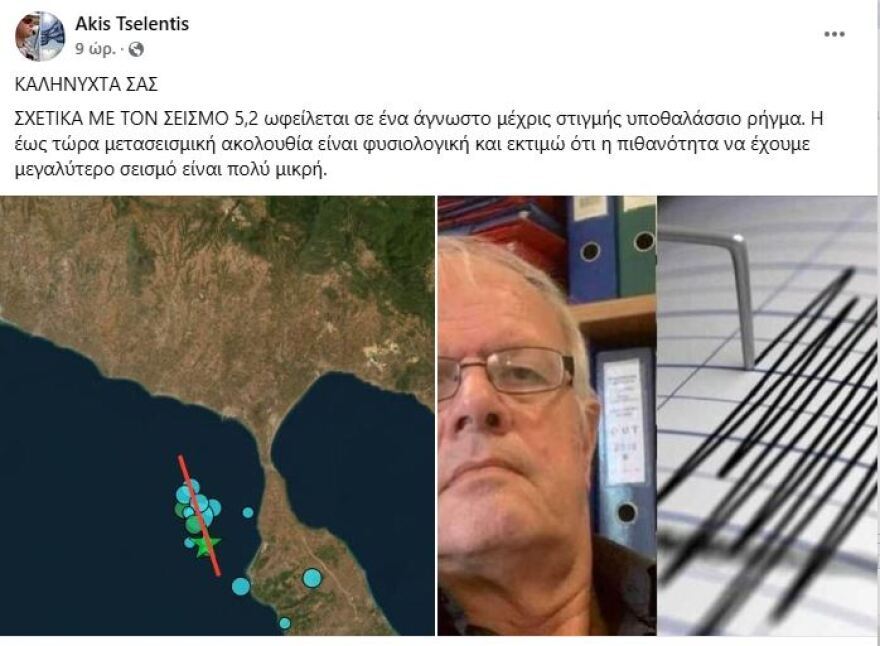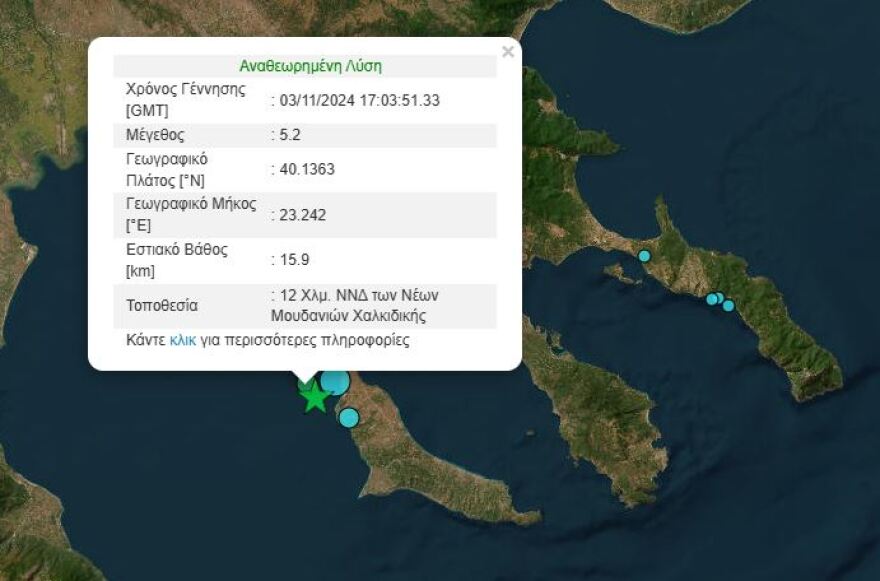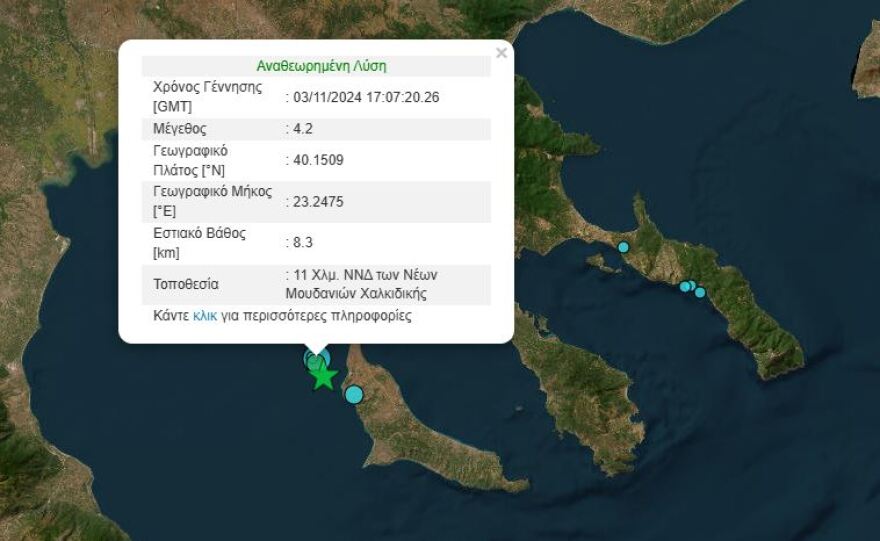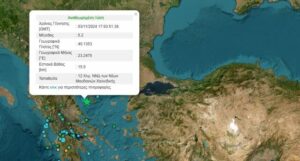The area of Halkidiki where the 5.2 magnitude earthquake occurred on Sunday afternoon is being monitored by seismologists in order to analyze the course of the phenomenon.
According to the director of the Geodynamic Institute, Akis Tselentis, the 5.2 magnitude earthquake “is due to a so far unknown submarine fault”.
According to Tselendis, “the aftershock sequence so far is normal and I estimate that the probability of a larger earthquake is very low.”

At the same time, security cameras have been recording the moment the earthquake struck. In a supermarket in the area of Potidea, products fell from the shelves while another camera in Nea Moudania shows the noise caused by the earthquake.
Earthquake 5.3 in Nea Moudania
Posted by Giorgos Gerakis on Sunday, November 3, 2024</blockquote
@allaboutcomputers.grWatch how we rocked in Nea Moudania! A major earthquake, measuring 5.3 on the Richter scale, occurred on Sunday afternoon (03/11, 19:03) in Halkidiki! #seismos #chalkidiki ♬ Police Siren – Police Siren
According to the Geodynamic Institute, the first earthquake at 19.03 had an intensity of 5.2 Richter with the epicenter located 12 kilometers southwest of Nea Moudania, Halkidiki, with a focal depth of 15.9 kilometers.

The second earthquake at 19.07 had an intensity of 4.2 Richter with the epicenter located 11 kilometers southwest of Nea Moudania Halkidiki with a focal depth of 8.3 kilometers.

At the same time, weak earthquake tremors of up to 3 Richter followed.
The earthquakes in the sea area south, southwest of Nea Moudania and several areas of Macedonia are understandable to have caused upset, however, as Kostas Papazachos, professor of Geophysics at the Aristotle University of Thessaloniki, told AP – MPE, they should not cause any particular concern.
“It is an area of low seismicity, both from instrumental data – since we have seismographs, from the 20th century onwards – and before that, there are no historical descriptions of strong earthquakes in the area, nor historical descriptions of disasters,” he stressed, describing the earthquake as “small”. “It is not an earthquake that should cause particular concern it is in an area of low seismicity. Because it is a maritime area, we don’t have a good picture of faults etc. and we rely solely on seismological data. And these data speak of an area of low seismicity without strong earthquakes,” the geophysics professor pointed out.
However, Papazachos clarified that “we will have a fairly significant aftershock sequence, demanding, which means that residents from Nea Playa to the Sani area, Siviri, Cassandra, in general, will feel several aftershocks. Already, there have been many aftershocks.
We will be monitoring the phenomenon in the coming days, but due to the history of the area, this aftershock sequence cannot be assessed as particularly worrying, it seems a normal sequence that has a serious chance of completing smoothly in the coming days. Aftershocks of course we will have many” concluded Papazachos. Two earthquakes a few minutes apart occurred on Sunday afternoon (3/11) in Halkidiki.
Ask me anything
Explore related questions





